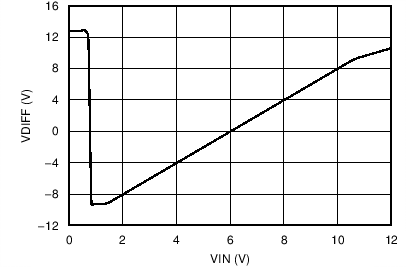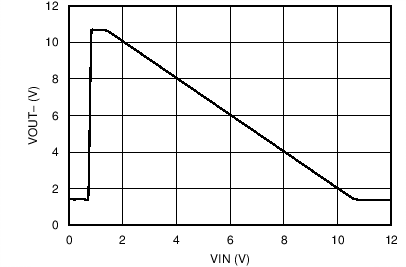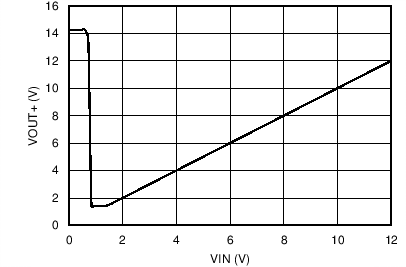SLOS073H March 1976 – October 2024 RC4558
PRODUCTION DATA
7.2.3 Application Curves
The measured transfer functions in Figure 7-2, Figure 7-3, and Figure 7-4 were generated by sweeping the input voltage from 0V to 12V. However, this design must only be used between 2V and 10V for optimum linearity.
 Figure 7-2 Differential Output Voltage Node vs Input Voltage
Figure 7-2 Differential Output Voltage Node vs Input Voltage Figure 7-4 Positive Output Voltage Node vs Input Voltage
Figure 7-4 Positive Output Voltage Node vs Input Voltage Figure 7-3 Positive Output Voltage Node vs Input Voltage
Figure 7-3 Positive Output Voltage Node vs Input Voltage